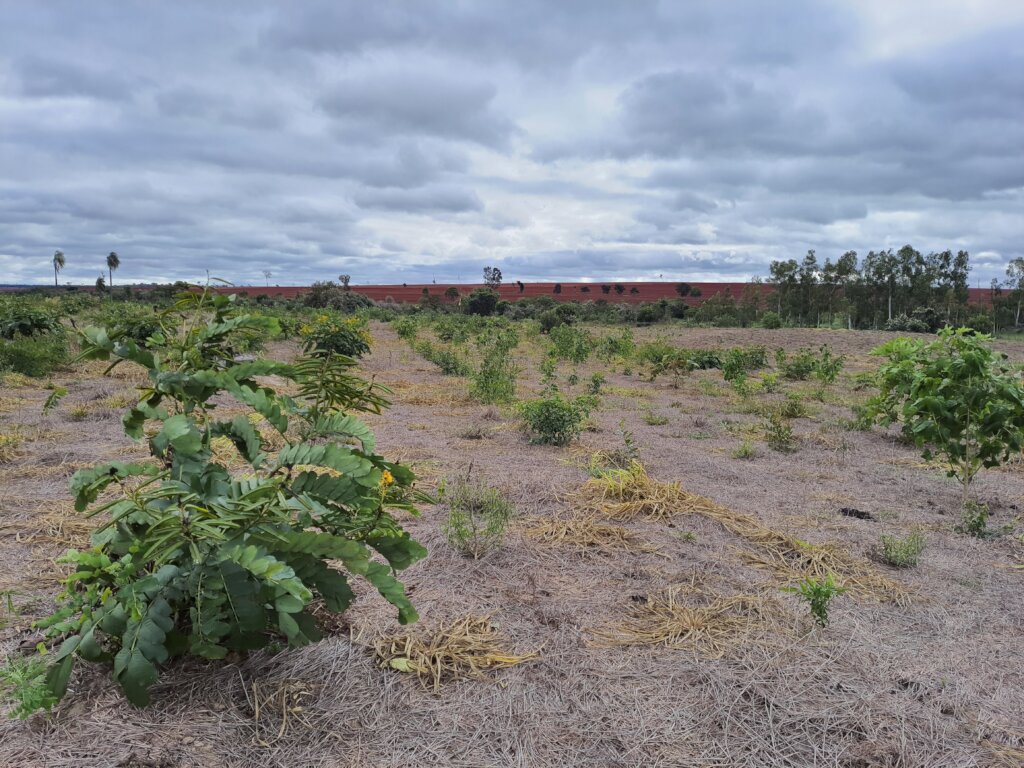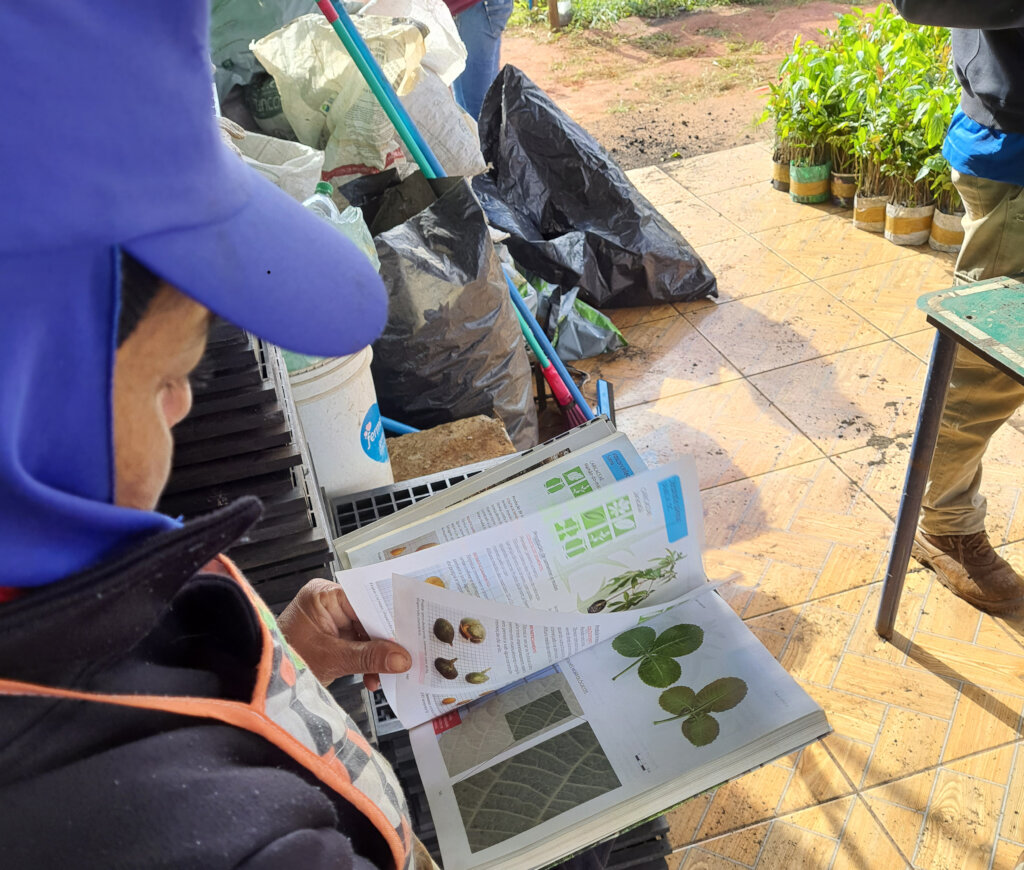By Vienna Leigh | Communications Manager at WeForest
The adjustments we’ve made in planting and maintenance are already showing a much better result than the seedlings we monitored early this year, which, after the worst dry spell in 91 years being followed by unprecedented frosts, were showing lower survival rates than usual. Though we haven’t got the data analyzed yet, it’s clear to the naked eye that the seedlings are coming up faster and stronger. Invasive grass control is also taking place so that replanting can start once the rains arrive, hopefully in October.
The photo shows an area approximately six months after planting where the new technique of irrigating at the same time as planting was carried out. During the last field visit, our Brazil Project Manager was impressed by the high survival estimates – around 90% in some areas, like this one. Early in 2023 a vegetation assessment will take place to measure survival and development of planted trees as well as spontaneous regeneration.
As well as making adjustments in planting techniques to ensure better survival, our partner Viveiro Floresta (IPÊ) is helping the community nurseries improve their facilities, making sure there will be enough seedlings to fulfill the increasing restoration demand at Pontal. Following a workshop organized by WeForest and IPÊ at the end of last year, the nursery staff have been using the reference books and incorporating the best identification practices into their daily routine. Year after year, the identification of the best performing species will be tailored to concentrate on the most likely to survive and develop in the field.
Thank you for making this possible!
By Vienna Leigh | Communications Manager at WeForest
By Vienna Leigh | Communications Manager at WeForest
Project reports on GlobalGiving are posted directly to globalgiving.org by Project Leaders as they are completed, generally every 3-4 months. To protect the integrity of these documents, GlobalGiving does not alter them; therefore you may find some language or formatting issues.
If you donate to this project or have donated to this project, you can receive an email when this project posts a report. You can also subscribe for reports without donating.
Support this important cause by creating a personalized fundraising page.
Start a Fundraiser
